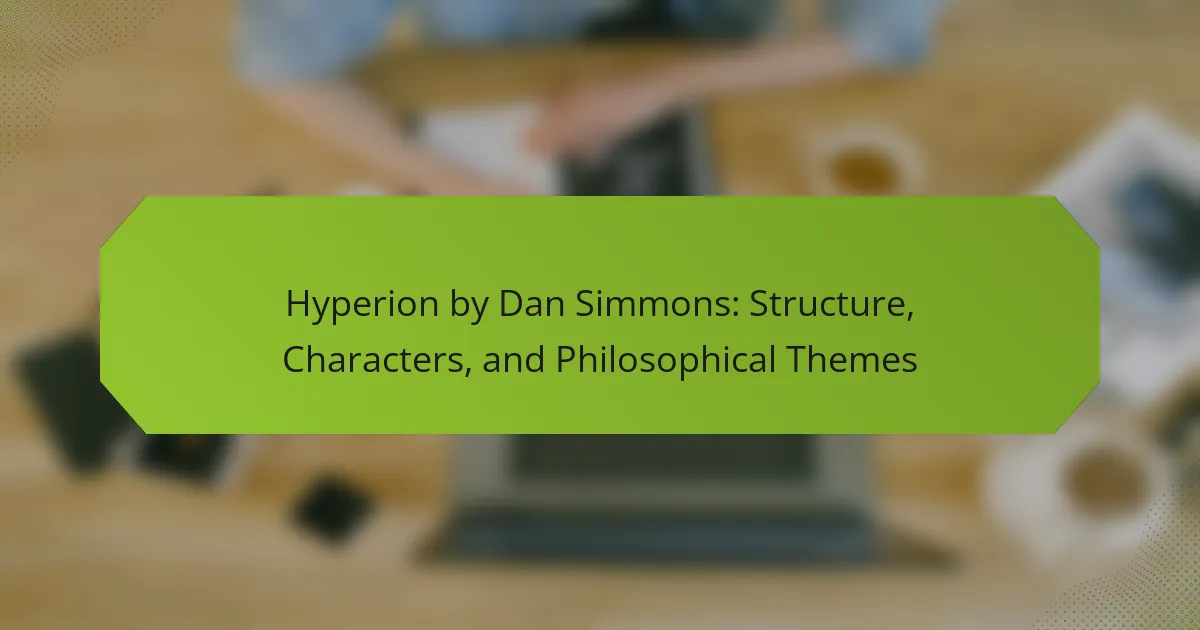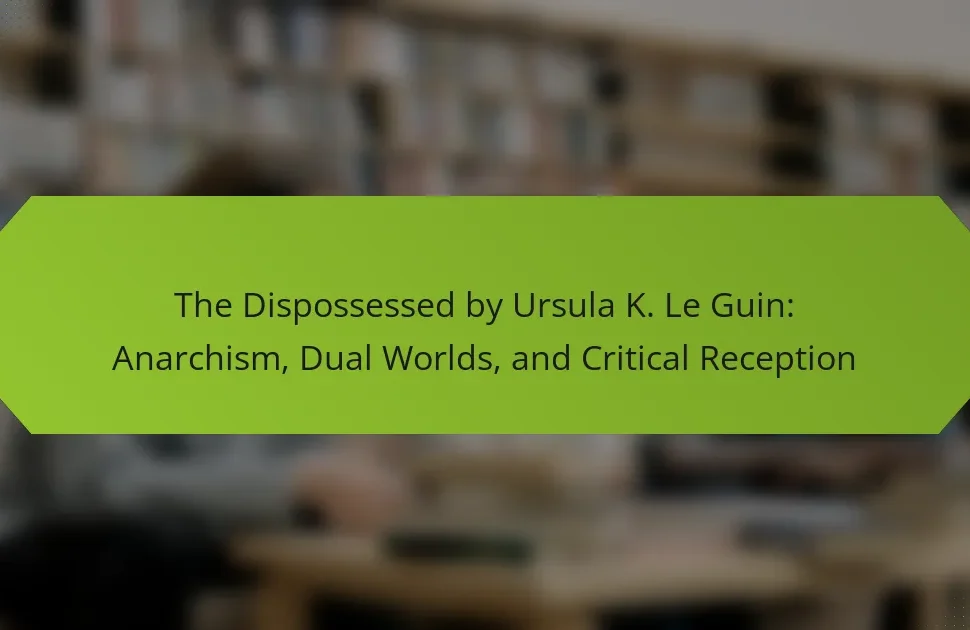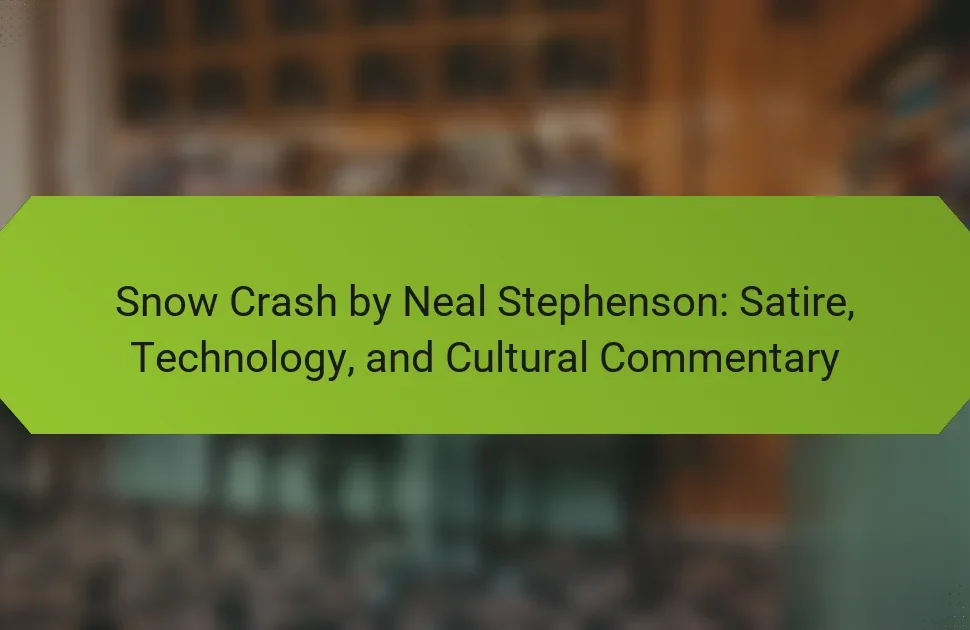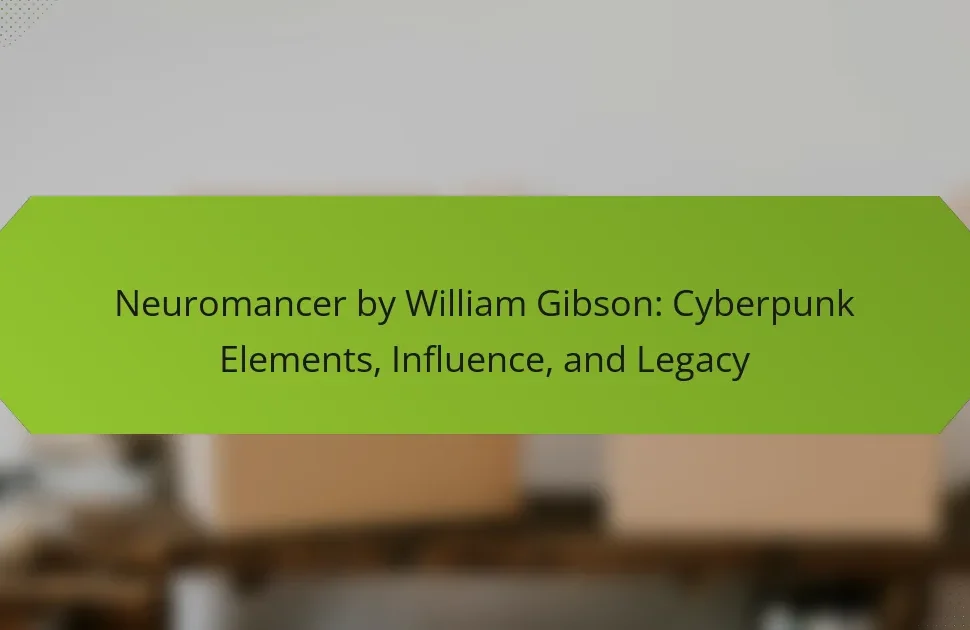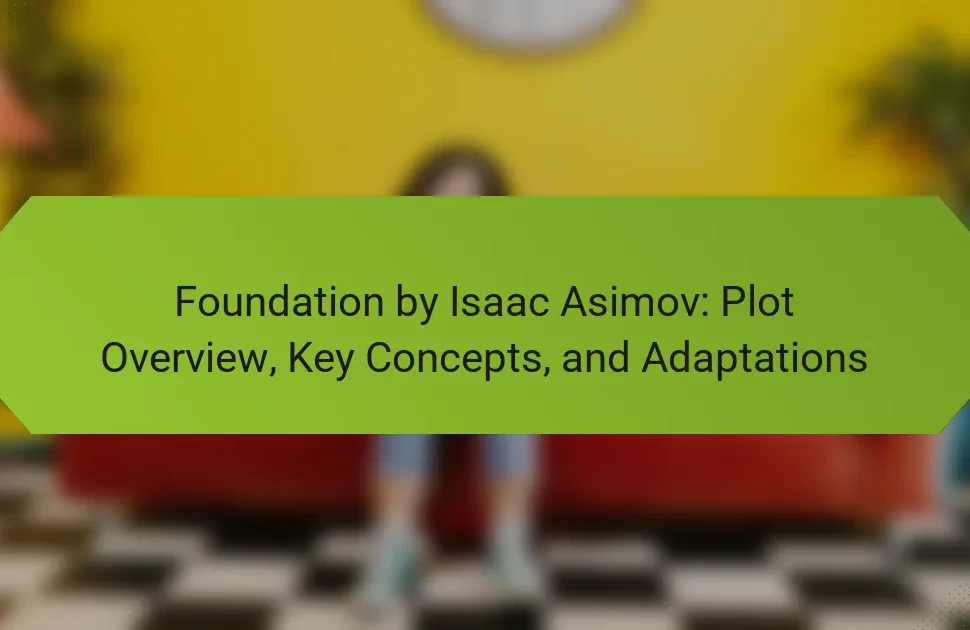Exploring the intricate narrative of “Hyperion” by Dan Simmons reveals its complex structure, diverse characters, and profound philosophical themes. The novel’s layered storytelling intertwines multiple character perspectives, each reflecting unique existential dilemmas. Key characters embody distinct themes, such as faith, violence, and creativity, while the overarching narrative delves into concepts like time, free will, and the search for meaning. This analysis highlights how the interplay of myth and reality enriches the reader’s understanding of human experience and inquiry.

What are the key structural elements of Hyperion?
Hyperion by Dan Simmons features a complex structure that intertwines multiple narratives and themes. The novel is divided into four main parts, each focusing on a different character’s story. This layered storytelling enhances the exploration of philosophical themes such as time, religion, and human experience. The unique framing device of a pilgrimage to the distant world of Hyperion adds depth to the characters and their motivations. Each character’s tale contributes to the overarching narrative, creating a rich tapestry of interconnected experiences.
How does the narrative framework influence the storytelling?
The narrative framework in “Hyperion” significantly shapes its storytelling by intertwining multiple perspectives. This structure enhances character development and philosophical exploration. Each character’s tale reflects unique attributes and themes, creating a rich tapestry of interconnected narratives. As a result, the reader experiences a profound journey through time and space, emphasizing the complexity of human experience and existential questions.
What role does the pilgrimage play in the novel’s structure?
The pilgrimage serves as a narrative framework in “Hyperion,” structuring the storytelling through interconnected tales. Each character’s journey reveals their personal struggles and philosophical themes, creating a rich tapestry of experiences. This structure emphasizes the collective quest for understanding and meaning amid the backdrop of a larger cosmic conflict. The pilgrimage format allows for deep character exploration while maintaining a cohesive narrative flow, enhancing the novel’s thematic depth.
Which literary devices are prominent in Hyperion’s construction?
Hyperion employs various literary devices, enhancing its narrative complexity and thematic depth. Prominent devices include frame narrative, symbolism, and allusion. The frame narrative structure allows multiple perspectives, enriching character development. Symbolism, particularly in the journey motif, represents personal and collective quests. Allusion to literary and philosophical works deepens the thematic resonance, inviting readers to explore deeper meanings.
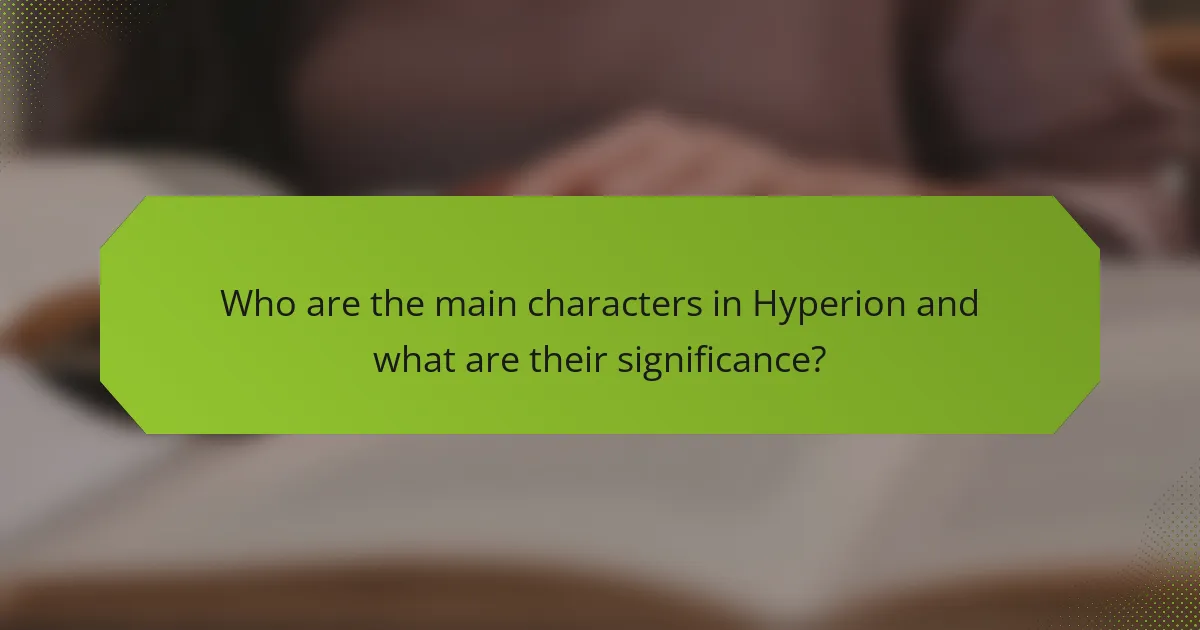
Who are the main characters in Hyperion and what are their significance?
The main characters in “Hyperion” include the Priest, the Soldier, the Poet, the Scholar, the Detective, and the Consul, each representing distinct philosophical themes. Their significance lies in their diverse perspectives on existence, suffering, and the search for meaning. The Priest explores faith, the Soldier confronts violence, the Poet embodies creativity, the Scholar seeks knowledge, the Detective uncovers truth, and the Consul grapples with power. Together, they create a rich tapestry of human experience and inquiry.
What are the backstories of the pilgrims and how do they shape the plot?
The backstories of the pilgrims in “Hyperion” significantly shape the plot by revealing their motivations and personal struggles. Each character’s history provides context for their journey to the Time Tombs, intertwining their destinies with the overarching themes of sacrifice, redemption, and the search for meaning. Their unique attributes, such as Father Hoyt’s religious convictions and the Consul’s political dilemmas, drive the narrative forward and influence interactions among the pilgrims. As a result, these backstories create a rich tapestry of interconnected stories that enhance the philosophical depth of the novel.
How do the character arcs contribute to the overarching themes?
Character arcs in “Hyperion” deepen the exploration of themes like sacrifice, faith, and the human condition. Each character’s journey reflects their struggles and growth, illustrating how personal experiences shape broader philosophical questions. For instance, the Pilgrims’ diverse backgrounds reveal varying perspectives on suffering and redemption. This interplay enhances the narrative’s complexity, inviting readers to consider the interconnectedness of individual and collective experiences. Ultimately, these arcs serve as a vehicle for thematic development, enriching the reader’s understanding of the text’s philosophical underpinnings.
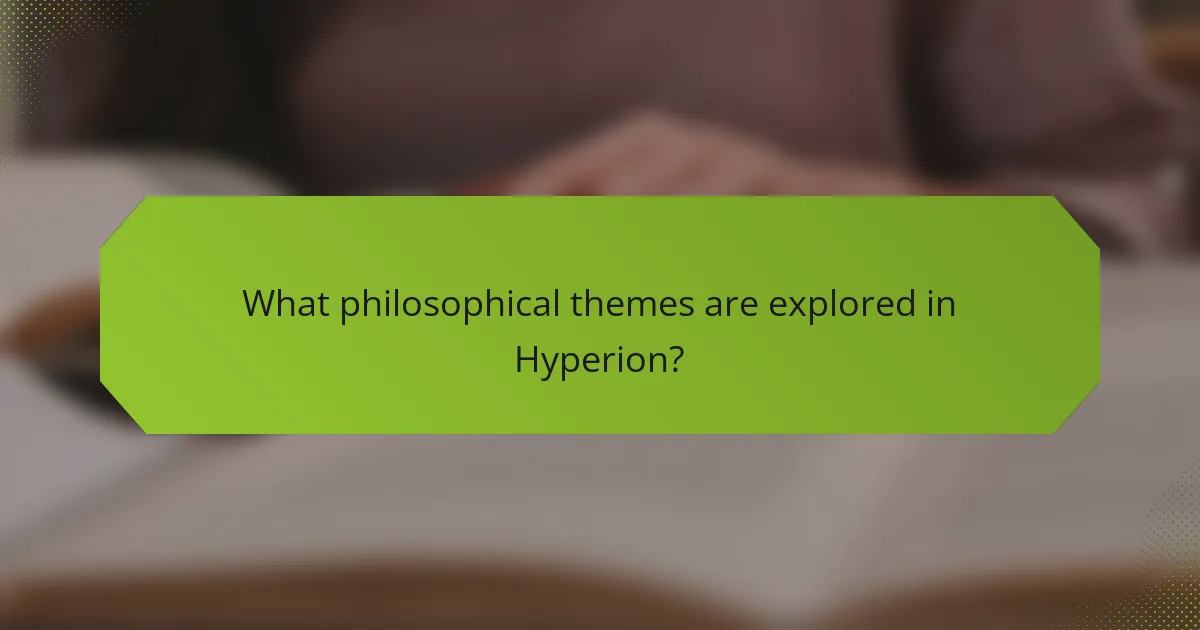
What philosophical themes are explored in Hyperion?
“Hyperion” by Dan Simmons explores themes such as the nature of time, the conflict between free will and determinism, and the search for meaning in suffering. The narrative structure emphasizes these philosophical inquiries through its multiple character perspectives. Each character’s journey reflects unique existential dilemmas, such as the quest for redemption and the impact of technology on humanity. The interplay of myth and reality further deepens the exploration of these themes, inviting readers to ponder the implications of their choices and the interconnectedness of all beings.
How does Hyperion address the concept of time and its implications?
Hyperion explores time as a fluid and multifaceted concept, emphasizing its impact on characters and events. The narrative structure utilizes a non-linear timeline, allowing for deep philosophical reflections on destiny, free will, and the cyclical nature of existence. Characters experience time differently, revealing unique attributes that shape their journeys. For instance, the Shrike embodies a rare aspect of time, representing both a threat and a guide, challenging perceptions of past, present, and future. This complex interplay invites readers to contemplate the implications of time on human experience and the universe.
In what ways does the novel explore the nature of religion and belief?
The novel “Hyperion” explores the nature of religion and belief through diverse characters and their personal journeys. Each character’s story reflects unique perspectives on faith, questioning the existence of a higher power and the role of suffering. The narrative intertwines religious themes with science fiction, examining how belief systems shape human experience. The presence of the Shrike, a mysterious entity, symbolizes the complexity of faith and divine intervention, prompting characters to confront their beliefs. Ultimately, the novel portrays religion as a multifaceted force that influences morality, purpose, and the quest for understanding in a chaotic universe.
What existential questions does Hyperion raise through its characters?
Hyperion raises profound existential questions through its characters, exploring themes of identity, purpose, and the nature of humanity. Characters like Father Hoyt confront mortality and faith, while the Shrike embodies the fear of the unknown. Each tale reveals individual struggles with destiny and choice, prompting readers to reflect on their own existence. The diverse perspectives invite contemplation of time, love, and sacrifice, making the narrative a rich philosophical tapestry. Ultimately, Hyperion challenges the reader to ponder the significance of their own life journey.
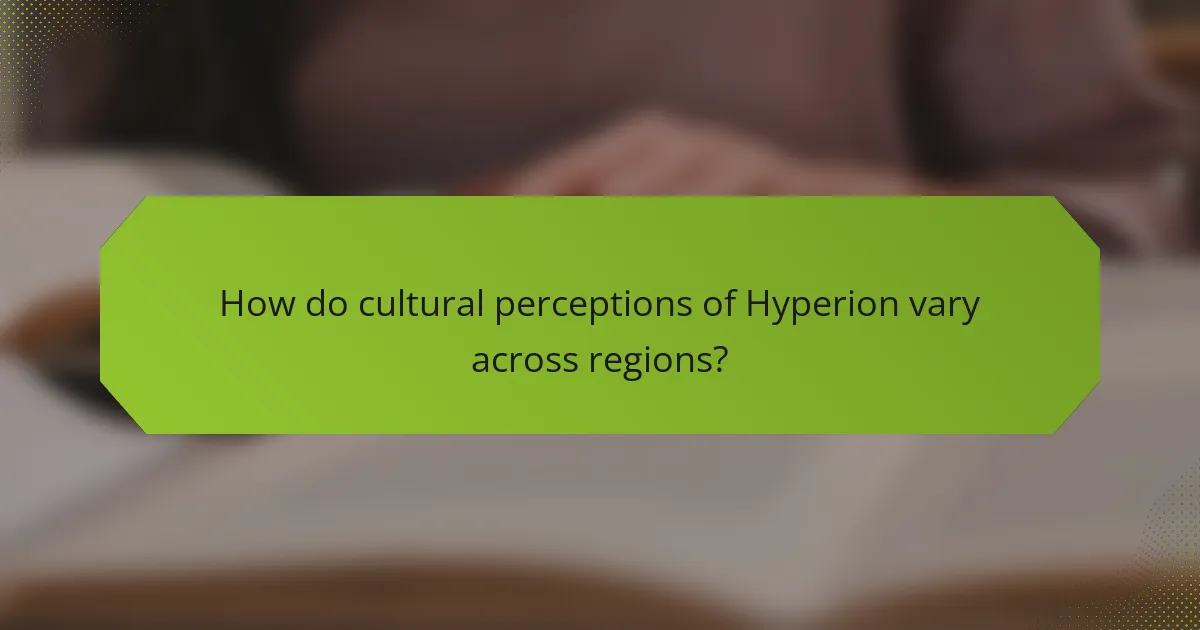
How do cultural perceptions of Hyperion vary across regions?
Cultural perceptions of Hyperion vary significantly across regions, influenced by local values and literary traditions. In Western cultures, Hyperion is often viewed through a lens of existentialism and human struggle, reflecting themes of sacrifice and the search for meaning. In contrast, Eastern interpretations may emphasize the spiritual and philosophical aspects, focusing on interconnectedness and the cyclical nature of existence.
Additionally, the unique attributes of Hyperion’s characters resonate differently; for example, the representation of the Shrike may symbolize different fears or aspirations depending on cultural context. Regions with a strong tradition of science fiction may appreciate the technological themes more, while others may focus on the mythological elements present in the narrative.
This diversity in interpretation highlights how Hyperion serves as a mirror reflecting the values and beliefs of various cultures, enriching the reading experience across the globe.
What are the interpretations of Hyperion in English-speaking countries?
Hyperion by Dan Simmons is interpreted as a complex narrative exploring themes of time, identity, and the human experience. Readers in English-speaking countries often emphasize its rich character development and philosophical depth. The structure, featuring multiple perspectives, enhances the exploration of these themes. Unique interpretations arise from cultural contexts, influencing readers’ connections to the narrative. The novel’s engagement with existential questions resonates widely, prompting discussions on its implications for humanity’s future.
How is Hyperion received in non-English speaking regions?
Hyperion by Dan Simmons is generally well-received in non-English speaking regions, praised for its complex narrative and philosophical depth. Readers appreciate the rich character development and intricate world-building. Translations play a crucial role in accessibility, often influencing reception. For instance, localized editions may highlight cultural references that resonate more with regional audiences. Additionally, the book’s themes of exploration and humanity’s future appeal universally, contributing to its global popularity.
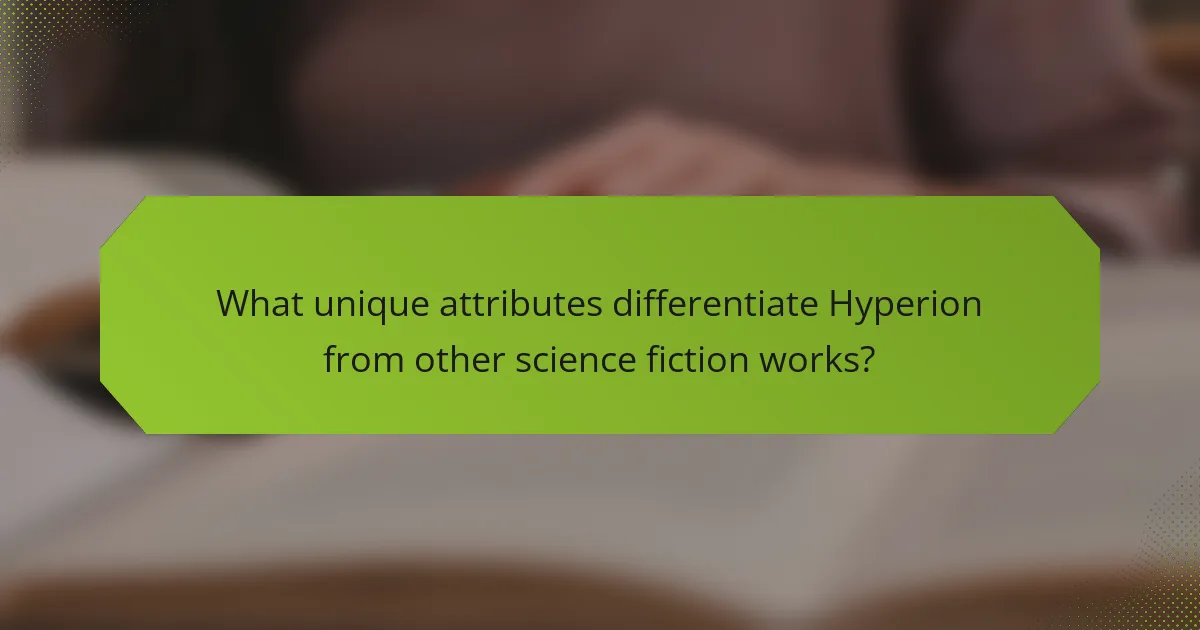
What unique attributes differentiate Hyperion from other science fiction works?
Hyperion by Dan Simmons stands out through its intricate structure, diverse character perspectives, and deep philosophical themes. The novel employs a unique narrative format where each character tells their own story, creating a rich tapestry of interconnected narratives. This multi-layered storytelling enhances the exploration of complex themes such as fate, free will, and the nature of existence. Additionally, the presence of the enigmatic Shrike character introduces a rare attribute that embodies the novel’s exploration of time and consequence, differentiating it from traditional science fiction works.
Which narrative techniques are exclusive to Hyperion?
Hyperion employs unique narrative techniques such as the frame story structure and multiple first-person perspectives. These techniques create a rich tapestry of interconnected tales that explore themes of time, memory, and the human experience. The use of the pilgrimage motif allows for deep philosophical reflections as each character shares their story, revealing their motivations and emotions. Additionally, the nonlinear timeline challenges conventional narrative flow, enhancing the complexity and depth of the storytelling.
How does Hyperion’s blend of genres set it apart?
Hyperion’s blend of genres uniquely combines science fiction, fantasy, and horror, creating a rich narrative tapestry. This fusion allows for deep philosophical exploration, character development, and intricate world-building. The nonlinear storytelling structure enhances the complexity, inviting readers to engage with multiple perspectives. By interweaving these genres, Simmons crafts a distinctive experience that challenges traditional boundaries and provokes thoughtful reflection on humanity and existence.
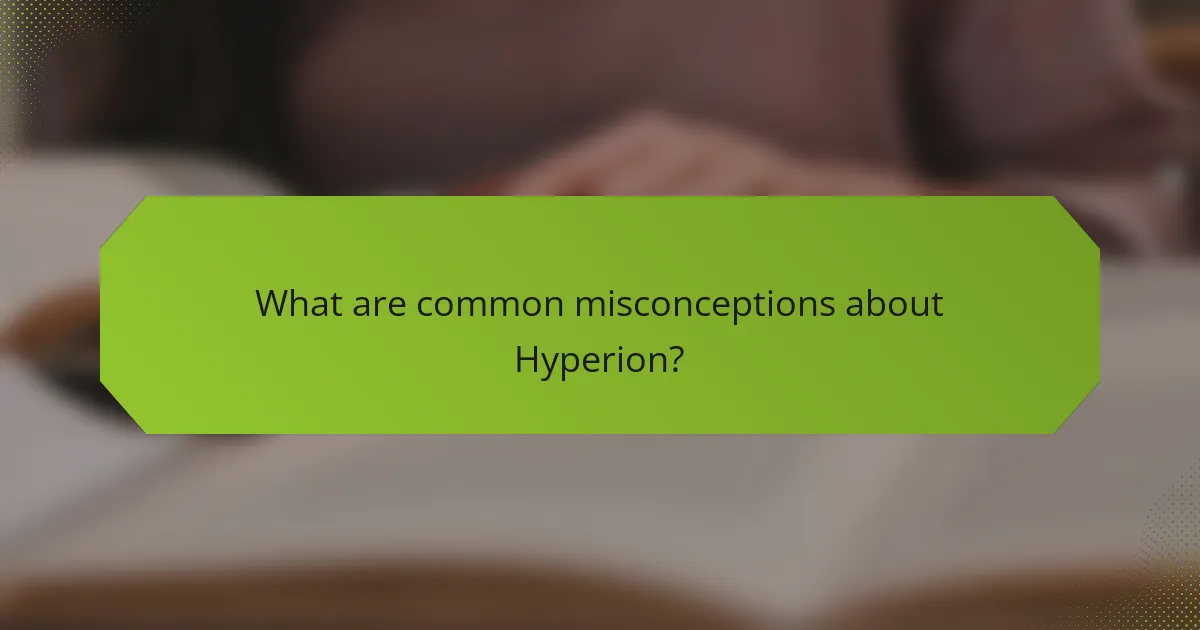
What are common misconceptions about Hyperion?
Many misconceptions about Hyperion include the belief that it is solely a science fiction novel. In reality, it blends elements of fantasy, horror, and philosophical inquiry. Some readers think it has a straightforward narrative; however, its structure is complex, featuring multiple perspectives and timelines. Additionally, the characters are often perceived as archetypes, but they possess deep psychological complexity and development. Lastly, some believe the themes are purely speculative, while they also explore profound questions about humanity, existence, and morality.
How does the portrayal of the Shrike differ from popular interpretations?
The portrayal of the Shrike in “Hyperion” contrasts with popular interpretations by emphasizing its role as a complex, multifaceted entity rather than a straightforward antagonist. In the novel, the Shrike embodies themes of time, suffering, and redemption, diverging from typical depictions of a malevolent force. Its unique attributes include the ability to manipulate time and its connection to the pilgrims’ journeys, which serve as a catalyst for personal transformation. This nuanced representation invites readers to explore deeper philosophical inquiries about fate and free will, enhancing the character’s significance beyond conventional villainy.
What are the misreadings of the pilgrims’ motivations?
The misreadings of the pilgrims’ motivations in “Hyperion” often stem from oversimplifying their quests. Many view their journeys as purely personal or selfish, ignoring the profound philosophical and existential themes driving them.
Misinterpretations include the reduction of their motivations to mere escapism or adventure. This overlooks the deeper search for meaning and connection to the universe. Additionally, some characters’ quests are misread as solely revenge or redemption, neglecting their complex emotional and spiritual layers.
These misreadings can hinder a full understanding of the narrative’s exploration of humanity’s struggles with faith, suffering, and the unknown. By recognizing these nuances, readers can appreciate the rich tapestry of motivations that define the pilgrims’ journeys.
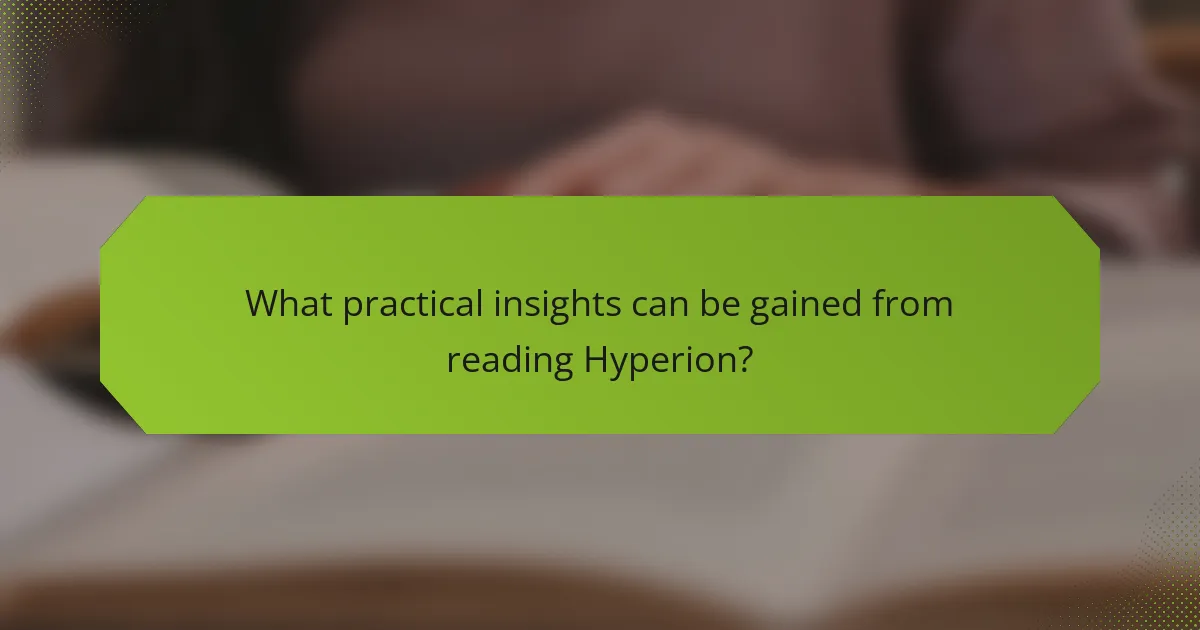
What practical insights can be gained from reading Hyperion?
Reading “Hyperion” offers insights into complex character development, intricate narrative structures, and profound philosophical themes. The novel’s multi-layered storytelling invites readers to explore concepts such as time, faith, and humanity’s place in the universe. Each character’s journey reflects diverse perspectives on existence, enhancing the reader’s understanding of moral dilemmas and existential questions. Additionally, the rich world-building provides a backdrop for examining the intersection of technology and spirituality, prompting reflections on the future of human experience.
What are the best practices for analyzing the themes in Hyperion?
To analyze themes in “Hyperion,” focus on character motivations, narrative structure, and philosophical underpinnings. Begin by examining the character arcs, as they reveal the thematic depth of sacrifice and redemption. Explore the intertwining stories that reflect human experience and existential inquiry. Consider the philosophical themes such as the nature of time and the quest for meaning, which are integral to the narrative. Engage with the text critically, noting how Simmons uses literary devices to enhance these themes. This multifaceted approach will yield a comprehensive understanding of the novel’s complexities.
Which common mistakes should readers avoid when interpreting the novel?
Readers should avoid over-simplifying the complex narrative and themes in “Hyperion.” Misinterpretations often stem from neglecting character depth and philosophical intricacies.
Common mistakes include:
1. Ignoring the non-linear structure, which affects character development.
2. Focusing solely on plot without considering the philosophical questions raised.
3. Underestimating the significance of each character’s pilgrimage and their unique perspectives.
4. Overlooking the intertextual references that enrich the narrative.
Understanding these elements enhances the reading experience and interpretation of the novel’s themes.
